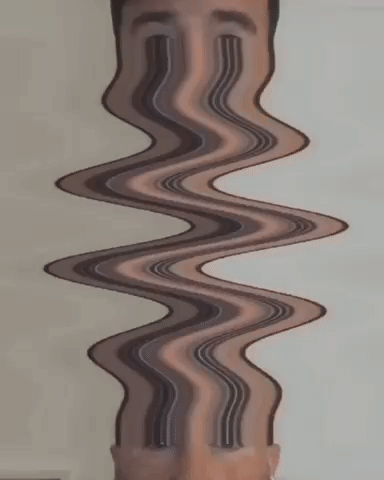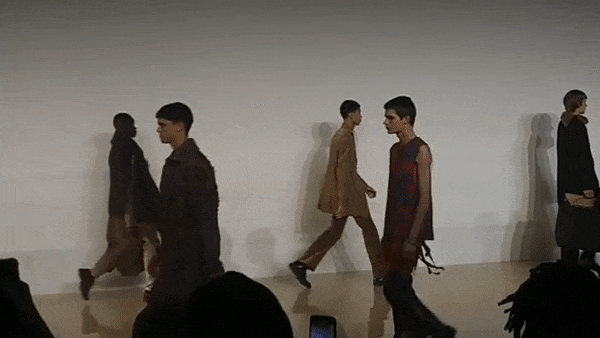Zach Lieberman

Stockholm-based fashion house Acne Studios featured a digitally manipulated model that heavily resembles artist Zach Lieberman’s popular AR face filter.
Lieberman’s “Eye Stretch” augmented reality filter on Instagram has had millions of impressions (launched on April 15, 2019). Today Lieberman noticed Acne Studios applying a highly similar style on a model on their website (as spotted by artist Molmol Kuo). He shared this on Twitter and Instagram:
Here’s a side by side:
Acne Studios website
Zach Lieberman Instagram AR Filter: Eye Stretch
Lieberman commented on his Instagram post, “Acne Studios reached out a while back so they at least had me on their radar.” He also wrote, “I am not claiming to own this look, I just was surprised to see this and a bit bummed because it would have been a cool project to do :)”
Lieberman’s work is VERY cool and always impressive. Artists are critical to advancing this new medium and the cultural and social impact it will have. A silver (and unfortunately uncredited and unpaid) lining? AR and face filters are shaping visual culture and the representations of how we see ourselves: these images are not only mirrored back to us instantly through lenses on Instagram and Snapchat on our smartphones, they are also beginning to appear in the popular culture images we consume in magazines, movies, music videos, on models, and while shopping online. Lieberman’s work and other artists are driving this and contributing to AR’s visual lexicon or style guide, which is beginning to impact our visual culture at large.
I often reference and highly recommend reading artist Golan Levin’s important article on new media artworks as prequels to everyday life. (I also quote Levin in my book “Augmented Human” in a discussion on the critical role of artists in our industry.)
“[...] some of today’s most commonplace and widely-appreciated technologies were initially conceived and prototyped, years ago, by new-media artists. In some instances, we can pick out the unmistakable signature of a single person’s original artistic idea, released into the world decades ahead of its time — perhaps even dismissed, in its day, as useless or impractical — which after complex chains of influence and reinterpretation has become absorbed, generations of computers later, into the culture as an everyday product. ”
Levin cites numerous examples in his article (seriously, read it) including Chris O’Shea’s artwork “Hand from Above” (2009), and the Forever21 Billboard by Space150 (2010).
Closing this out with an excerpt from “Augmented Human”:
“I believe artists act as wonderment operators. They are magical weavers stitching together pieces of daily life into an extraordinary reality and future. As channels, conduits, and translators, they help us to see the world with new eyes. The role of an artist is to observe, empathize, and to reflect those things back to the world, presenting another way of being, feeling, hearing, and seeing. To me, this is the definition of innovation, and another reason to seek out artistic exploration in AR.”







